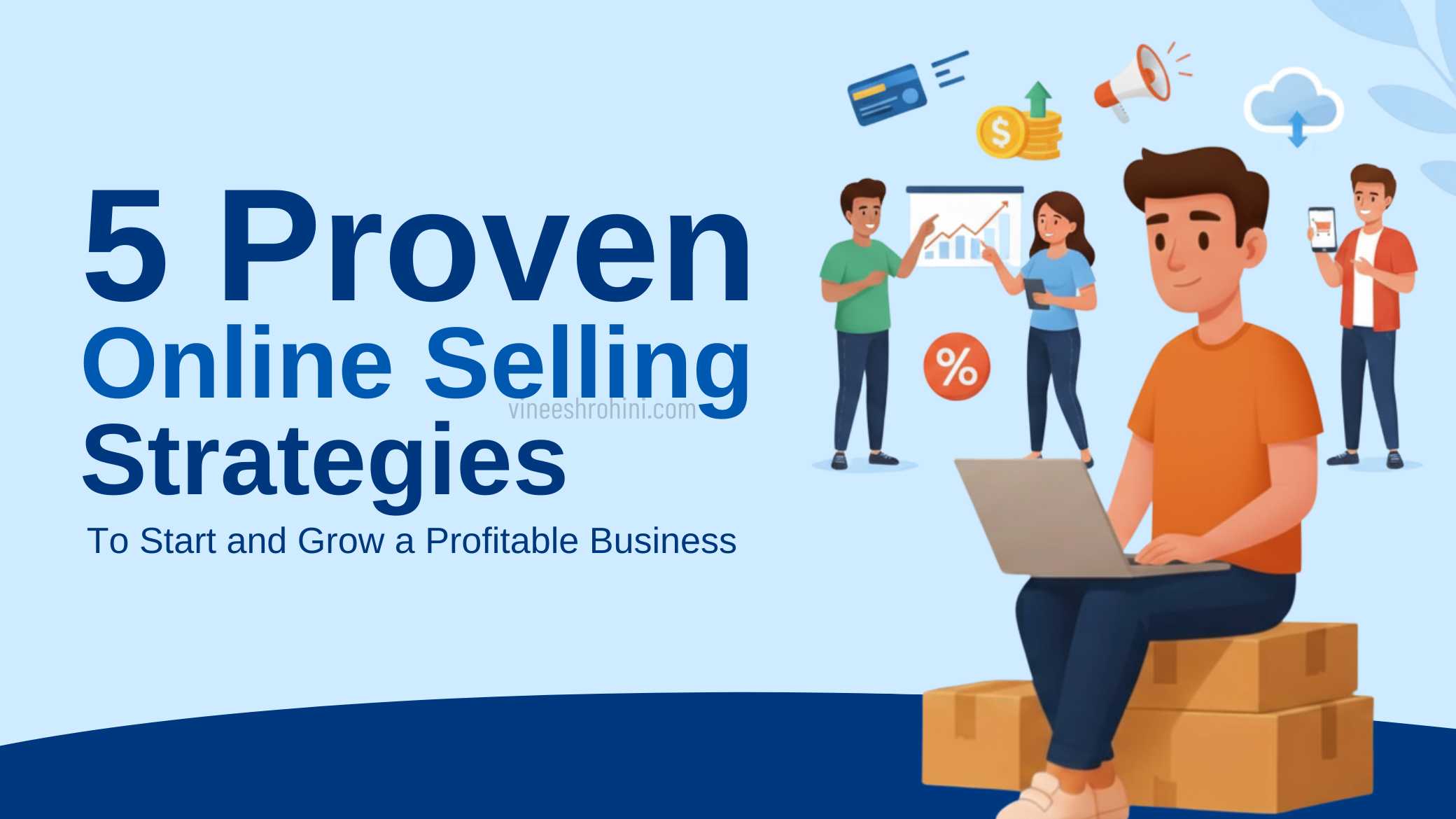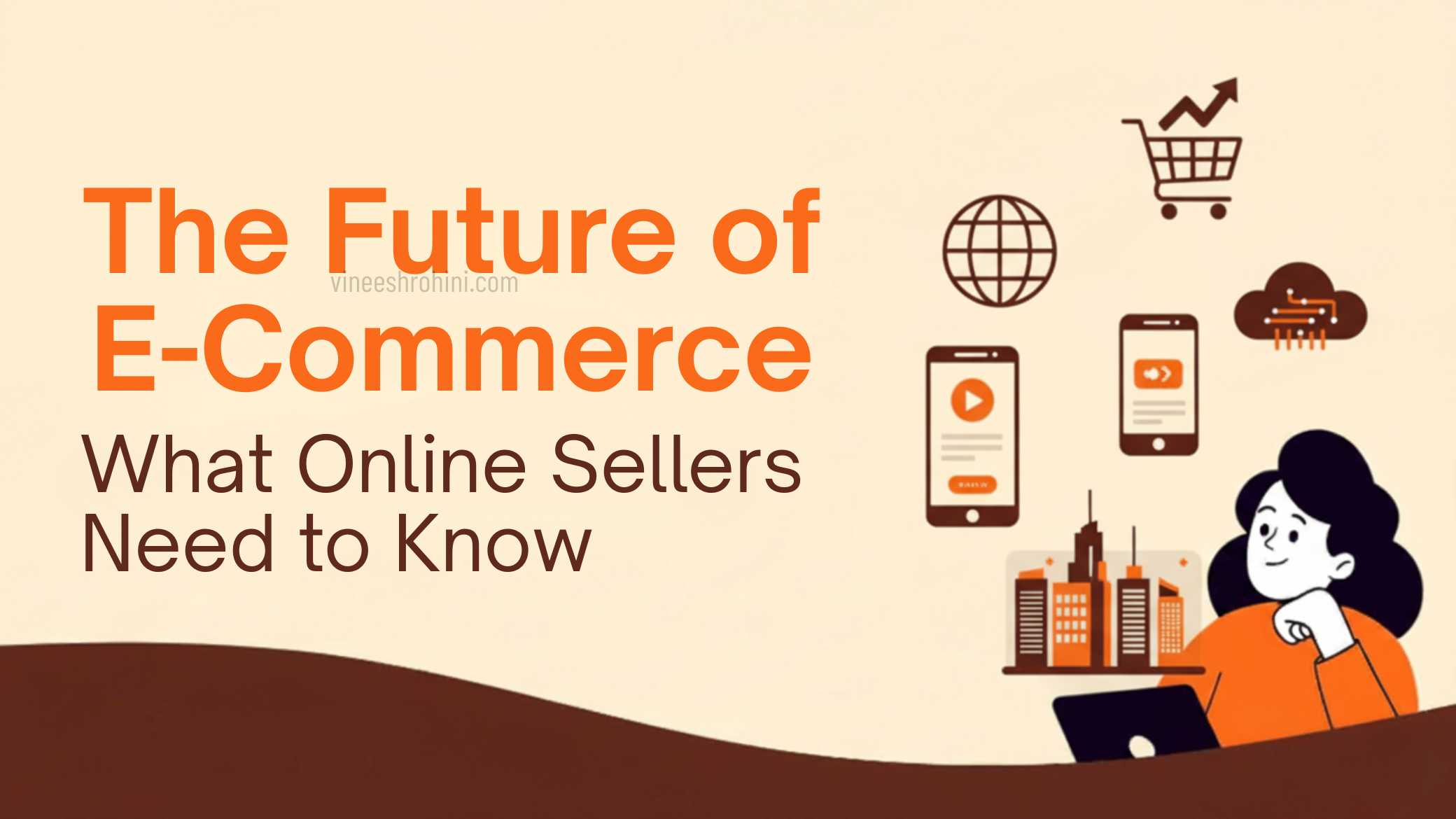Best E-Commerce Platforms For Sellers in 2025
E-Commerce Platforms for Sellers : In 2025, the e-commerce industry is at an all-time high. Businesses across the world are embracing digital transformation, and sellers are no longer confined to physical boundaries. With technology rapidly evolving, consumers demanding convenience, and markets becoming more competitive, the importance of choosing the right e-commerce platform has become paramount.
Table of Contents
This detailed guide explores the best e-commerce platforms for sellers in 2025, essential features to look for, current trends, challenges, and strategic insights to help sellers succeed in the dynamic digital marketplace.
The Growing Significance of E-Commerce Platforms

E-commerce platforms serve as the backbone for online businesses. They provide sellers with the tools to manage inventory, process payments, engage with customers, and analyze performance. In 2025, these platforms have grown beyond basic storefronts. They now offer integrated marketing, AI automation, mobile responsiveness, social commerce, and logistics support. Sellers looking to thrive in this landscape must rely on platforms that not only support their operational needs but also offer scalability and innovation.
Key Features to Look for in an E-Commerce Platform
Selecting an e-commerce platform in 2025 requires a deep understanding of both current features and future-readiness. Sellers must prioritize platforms that offer:
Mobile Optimization and PWA
With over 80% of shoppers using mobile devices, mobile-first design is non-negotiable. Progressive Web Apps (PWAs) are becoming the standard, offering app-like experiences without requiring downloads.
Also Read : Ecommerce Customer Service: 6 Tips for Online Support
AI-Driven Personalization
Artificial Intelligence plays a crucial role in customer engagement. From personalized product recommendations to intelligent search and chatbot support, AI helps boost conversions and improve user satisfaction.
Multiple Payment Integrations
E-commerce in 2025 requires support for diverse payment options including UPI, credit cards, BNPL services, digital wallets, and even cryptocurrency. The right platform must support all these methods securely and seamlessly.
Omnichannel Selling
Customers interact with brands across multiple channels. An ideal platform supports selling on Instagram, Facebook, WhatsApp, Amazon, Flipkart, and other marketplaces while maintaining centralized control.
Advanced SEO and Marketing Tools
Built-in SEO tools, meta tag customization, automated email marketing, push notifications, and integration with tools like Google Ads and Meta Ads are essential for visibility and growth.
Inventory and Logistics Automation
Real-time inventory tracking, automatic stock updates, shipping integrations, and warehouse management help sellers streamline operations and reduce manual errors.
Third-Party Integration and Extensibility
A scalable platform allows plugins and API access to integrate with CRM, ERP, analytics tools, and other SaaS services, enhancing functionality based on business needs.
Top E-Commerce Platforms for Sellers in 2025
Shopify
Shopify continues to dominate in 2025 with a global user base and extensive ecosystem. It’s user-friendly and supports everything from D2C brand development to dropshipping via tools like DSers. Shopify Magic, its AI feature, simplifies product descriptions, ad copy, and even marketing campaigns. It supports over 100 payment gateways and allows full integration with social and marketplace channels.
WooCommerce
Built on WordPress, WooCommerce is perfect for content-first businesses, bloggers, and sellers who want full customization. It’s free to start, supports thousands of plugins, and is highly SEO-friendly. In 2025, WooCommerce has advanced analytics dashboards and compatibility with headless commerce models.
BigCommerce

BigCommerce excels in scalability and is the go-to platform for large enterprises and B2B sellers. It offers multi-storefront support, custom pricing levels, native B2B tools, and seamless ERP integration. With low maintenance requirements and excellent uptime, BigCommerce is ideal for complex e-commerce operations.
Wix eCommerce
Wix has evolved into a competitive e-commerce solution offering drag-and-drop design, built-in dropshipping with Modalyst, and AI-driven design tools. It’s suitable for artists, creators, and small businesses looking for ease of use combined with powerful features like product videos, abandoned cart recovery, and multichannel sales.
Magento (Adobe Commerce)
Adobe Commerce, formerly Magento, is best suited for large businesses with technical teams. It provides advanced customization, supports multi-store setups, and excels in performance and scalability. Features like AI-based personalization, real-time inventory management, and B2B support make it ideal for international brands.
Squarespace Commerce
Popular among creatives, Squarespace focuses on stunning visuals and ease of use. It’s great for small stores selling fashion, photography, and design-related products. Its templates are visually impressive, and it offers integration with ShipStation, Stripe, and PayPal for smooth checkout experiences.
Dukaan
An Indian favorite, Dukaan lets sellers create a digital storefront in under 60 seconds. In 2025, Dukaan supports UPI payments, multilingual interfaces, WhatsApp orders, and has introduced AI marketing tools. It’s particularly beneficial for local businesses, Kirana stores, and hyperlocal sellers.
Ecwid by Lightspeed
Ecwid is perfect for those who already have a website or social media presence and want to add a store. It’s lightweight, easy to use, and syncs products across Facebook, Instagram, and marketplaces. In 2025, it offers zero commission on sales and advanced automation workflows.
Meesho Supplier Panel
Meesho helps manufacturers and wholesalers reach Indian resellers who promote and sell products on social channels. It provides a ready logistics network, COD support, and visibility to millions of sellers. It’s a great starting point for mass-market consumer goods.
Amazon and Flipkart Seller Hubs

These marketplaces require no website or store-building effort. Sellers can list products, benefit from built-in traffic, and leverage logistics and customer service solutions. In 2025, both platforms have improved seller dashboards, faster payments, and integrated ad solutions to increase visibility.
Emerging Trends in E-Commerce Platforms
Voice Commerce
Voice assistants like Alexa and Google Assistant are becoming new storefronts. Platforms now support voice search, voice checkout, and even voice-based customer service.
Augmented Reality Integration
AR allows customers to visualize products in real-world environments before purchasing. Platforms like Shopify and Magento now offer AR plugins for apparel, furniture, and cosmetics.
BNPL and Microfinancing Options
Buy Now, Pay Later services like Simpl, ZestMoney, and LazyPay are helping boost average order values. Platforms that integrate these options are seeing higher conversion rates and customer satisfaction.
Cryptocurrency Payments
With crypto adoption rising, many platforms now accept Bitcoin, Ethereum, and stablecoins. Magento and Shopify support crypto payments via plugins like Coinbase Commerce.
Green Commerce and Sustainable Packaging
Environmental concerns are driving platforms to promote eco-friendly practices. Sellers can now add sustainability badges, offer carbon-neutral shipping, and integrate recyclable packaging information directly into their product pages.
How ONDC is Changing the Game in India
The Open Network for Digital Commerce (ONDC) is India’s biggest disruption in e-commerce. By offering an open-source protocol, ONDC allows sellers to list products once and be discoverable on multiple buyer apps including Paytm, PhonePe, and Magicpin. This reduces platform dependency, democratizes reach, and offers lower commission rates. E-commerce platforms integrating ONDC APIs are seeing massive traction among MSMEs and D2C brands.
Challenges Faced by E-Commerce Sellers in 2025
While opportunities abound, e-commerce in 2025 comes with its own set of challenges. Sellers must tackle rising digital ad costs, increased return rates, fake reviews, and stiff competition. Logistics delays, especially for cross-border commerce, can hurt reputation. Compliance with global privacy laws like GDPR and India’s Digital Personal Data Protection Act (DPDPA) requires careful data handling and transparency.
How to Choose the Right E-Commerce Platform
Selecting the right platform depends on your business size, technical ability, budget, and goals. Here’s a simplified guide:
- If you are a beginner or dropshipper: Go with Shopify or Wix
- If you are a content creator: WooCommerce is ideal
- If you run a large or B2B business: Choose BigCommerce or Magento
- If you are an Indian local business: Use Dukaan or Meesho
- If your focus is on visual branding: Squarespace fits well
- If you want fast access to buyers: Start with Amazon or Flipkart
Always evaluate platforms on the basis of ease of use, monthly cost, transaction fees, third-party integration, marketing support, and customer service responsiveness.
Future of E-Commerce Platforms
By 2030, e-commerce platforms will likely be powered by AI from end to end. Store building, product writing, marketing campaigns, and customer service will be automated. Blockchain will secure supply chains and enable decentralized commerce. VR shopping malls, metaverse storefronts, and hyper-personalized product feeds will become standard. Sellers who embrace innovation early will gain a massive competitive edge.
Conclusion

The e-commerce landscape in 2025 is full of opportunity, innovation, and intense competition.
Buy Now : Ecommerce Website With 100 Products
With the rise of AI, mobile-first consumers, and decentralized commerce, sellers must align with platforms that support their growth while enhancing customer experiences. Whether you’re building a brand from scratch or scaling to global markets, the platform you choose plays a critical role in your success. Evaluate your needs, watch market trends, and pick a platform that is flexible, secure, and future-ready.
Keywords : E-Commerce Platforms for Sellers – E-Commerce Platforms for Sellers 2025 , E-Commerce Platforms for Sellers list



